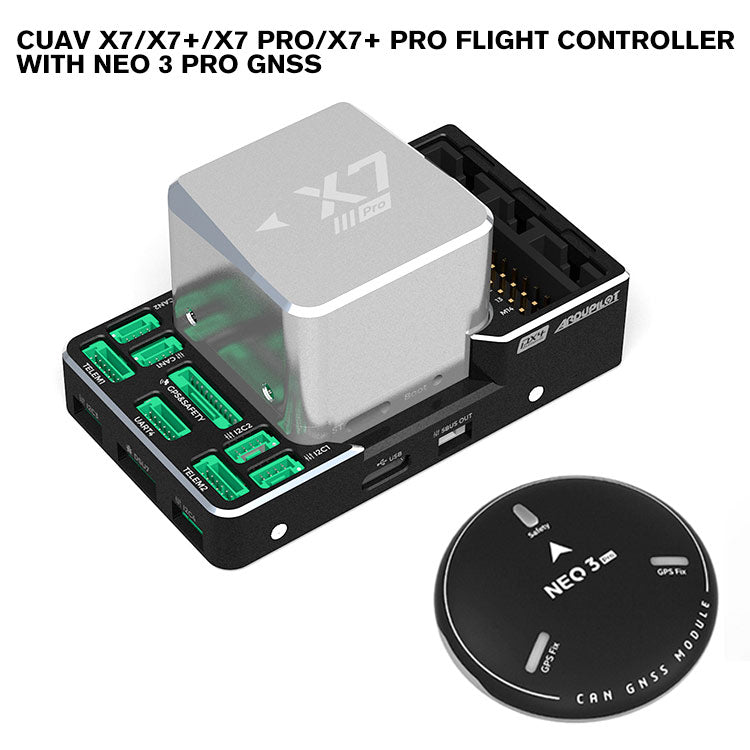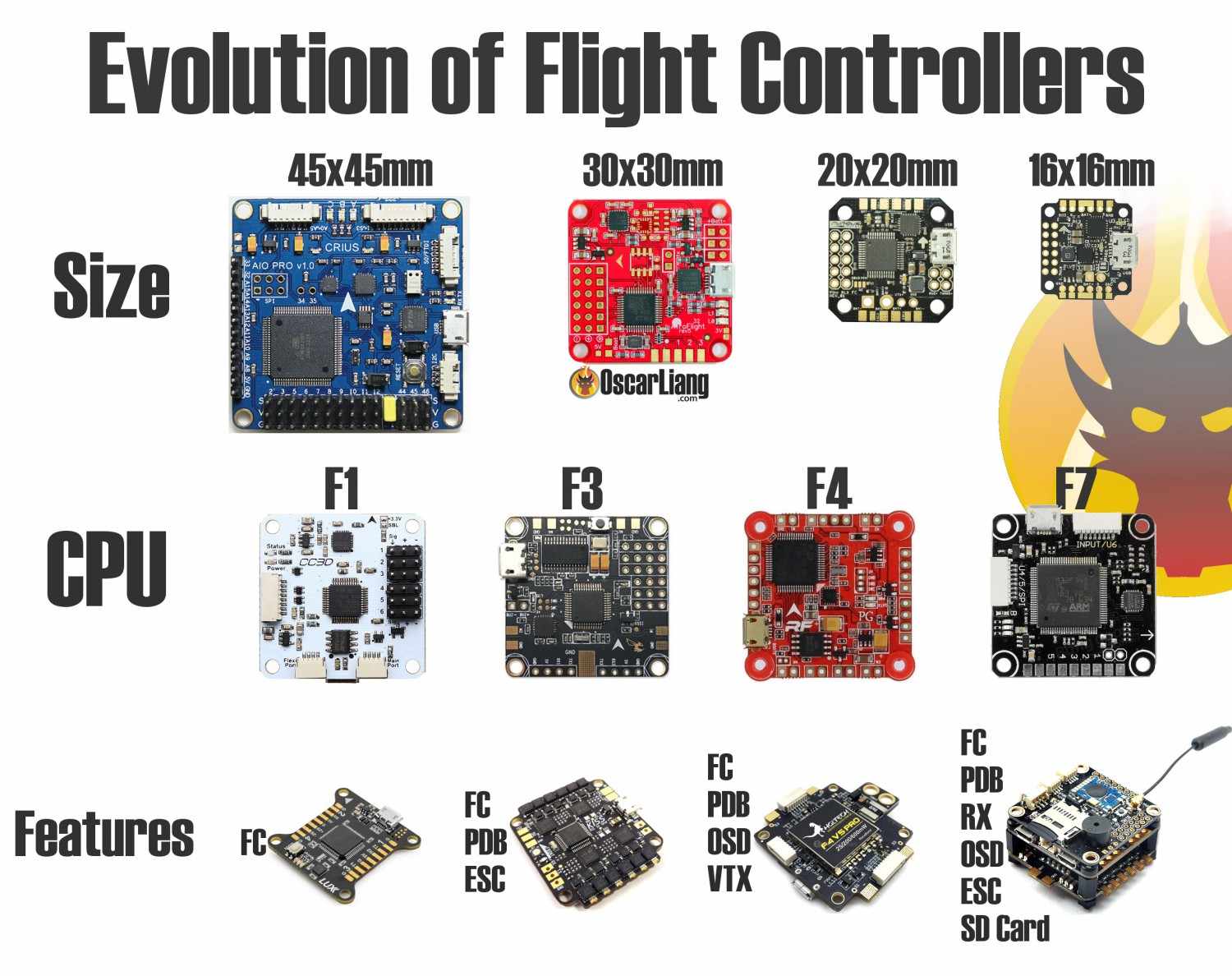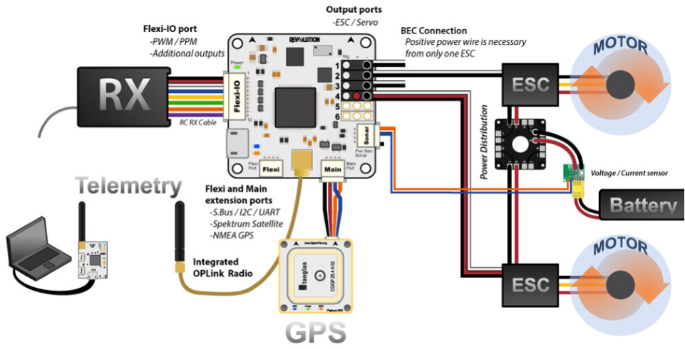Checking Out the Duty of Drone Trip Controllers in Enhancing Flight Security and Navigation Effectiveness
The innovation of drone technology has actually substantially raised the importance of flight controllers, which act as the brain of these aerial automobiles. By incorporating real-time data from a range of sensing units, trip controllers boost trip stability and navigating performance, making certain that drones can operate smoothly even in intricate environments. This conversation will certainly discover the key components that contribute to these improvements, in addition to the ramifications for the future of independent trip. What technologies lie ahead that could additionally change the capabilities of drone trip controllers?

Recognizing Trip Controllers
Flight controllers are important elements in the functioning of drones, offering as the brains that manage and stabilize flight operations. These advanced gadgets process data from different sensing units, consisting of accelerometers, gyroscopes, and GPS, to make certain that the drone keeps its desired trip course. The trip controller analyzes this data and performs commands based on pre-defined algorithms, enabling the drone to react to ecological changes, such as wind or barriers.
The main function of a flight controller is to keep security throughout flight. It achieves this by making real-time adjustments to the drone's electric motors and control surface areas, ensuring equilibrium and control. In addition, contemporary flight controllers incorporate advanced features such as waypoint navigating, enabling for automated flight paths and boosted functional efficiency.
Comprehending the architecture of trip controllers is crucial for both enthusiasts and professionals. As modern technology advancements, trip controllers have ended up being more compact and qualified, incorporating fabricated knowledge to improve decision-making procedures and adapt to complicated trip scenarios.
Secret Elements of Flight Stability
Achieving optimal flight stability in drones relies upon several key elements that operate in concert to guarantee smooth and regulated operations. Central to this security is the trip controller itself, which refines data from various sensors to maintain the wanted trip attitude. This includes accelerometers and gyroscopes that measure movement and positioning, permitting for real-time changes to the drone's setting.
An additional crucial element is the digital rate controllers (ESCs), which manage the power delivered to the motors. By finely tuning electric motor rates in feedback to flight controller commands, ESCs help keep equilibrium and neutralize disruptions brought on by wind or abrupt movements.
Additionally, the layout of the drone's frame plays a pivotal function in flight security. A well-structured frame minimizes vibrations and improves the general wind resistant account, adding to smoother flight qualities. Ultimately, the combination of sophisticated algorithms within the flight controller help in anticipating changes, making certain a adaptable and receptive trip experience.
Together, these parts develop a cohesive system that boosts a drone's stability, permitting exact handling and enhanced performance in various trip problems.
Navigation Effectiveness Techniques
Effectiveness in navigating is crucial for enhancing drone operations, specifically in complicated environments. Efficient navigation methods enhance the ability of drones to pass through challenging terrains and stay clear of obstacles, therefore enhancing functional effectiveness and safety and security.
One famous technique is the application of advanced GPS and inertial dimension units (IMUs) that give accurate area tracking and positioning information. These innovations permit drones to calculate ideal trip paths in real-time, taking into consideration numerous factors such as wind conditions and possible obstacles.
An additional technique includes the usage of formulas for path preparation and optimization. Algorithms such as A * and Dijkstra's formula can be released to determine the most reliable route while lessening energy consumption and trip time. In addition, integrating maker discovering models can enable drones to adaptively gain from their atmospheres, boosting navigation capabilities with experience.

Effect On Autonomous Drones
The assimilation of innovative navigating techniques has profoundly transformed the capabilities of autonomous drones, enabling them to operate with greater autonomy and precision. SparkNavi drone flight controller and GNSS/INS made in taiwan. These enhancements are primarily connected to advanced trip controllers that make use of real-time information handling and sensor combination, enabling drones to navigate complex atmospheres effortlessly
The effect on autonomous drones expands past simple navigation; it includes enhanced challenge avoidance, enhanced security throughout dynamic problems, and boosted objective integrity. By leveraging formulas that integrate artificial intelligence and artificial intelligence, drones can adapt to transforming conditions, making notified decisions that enhance their flight courses while lessening dangers.
Additionally, the application of robust trip controllers has actually helped with the execution of intricate jobs, such as aerial inspections, distribution services, and agricultural surveillance, with minimal human intervention. This capacity not only enhances procedures however also decreases human mistake, consequently enhancing overall safety and security.
Therefore, the functional range of autonomous drones has actually expanded significantly, making them crucial tools in numerous markets. Their capacity to carry out successfully in diverse circumstances underscores the essential role that progressed trip controllers play in shaping the future of unmanned airborne systems.
Future Patterns in Flight Control
Regularly, innovations in trip control innovation are poised to redefine the landscape of drone procedures in the coming years. Emerging patterns show a substantial change towards boosted artificial knowledge (AI) combination, enabling trip controllers to process real-time information a lot more successfully. This advancement will facilitate better decision-making abilities, permitting drones to adapt to dynamic ecological problems autonomously.
Moreover, the execution of artificial intelligence formulas is expected to enhance predictive maintenance, consequently decreasing downtime and extending the lifecycle of drone components. This positive method to upkeep will certainly be essential as drone applications increase throughout various industries, from agriculture to logistics.

.png)
Last but not least, innovations in secure see here now communication procedures will deal with security and regulative problems, making sure that drones can run flawlessly in congested airspaces (SparkNavi drone flight controller and GNSS/INS made in taiwan). Jointly, these trends point in the direction of a future where trip control systems are not just smarter and extra likewise capable but efficient of operating securely in a significantly incorporated airspace
Verdict
Finally, drone flight controllers are indispensable to enhancing flight security and navigating efficiency via the advanced handling of sensing unit data. By maintaining optimal trip attitudes and utilizing innovative formulas for course optimization and barrier avoidance, these controllers considerably add to the freedom and functional security of drones. As innovation remains to advance, further developments in flight control systems are anticipated, promising improved performance and expanded abilities in the realm of unmanned aerial automobiles.
By incorporating browse around these guys real-time information from an array of sensors, flight controllers enhance flight stability and navigation efficiency, making sure that drones can operate smoothly also in intricate environments.Trip controllers are integral elements in the performance of drones, serving as the brains that stabilize and manage trip procedures. Furthermore, contemporary flight controllers incorporate advanced attributes such as waypoint navigating, enabling for automated flight paths and boosted functional effectiveness.
Central to this stability is the flight controller itself, which refines information from various sensing units to maintain the wanted flight perspective.In verdict, drone trip controllers are essential to boosting look what i found flight stability and navigation efficiency through the innovative handling of sensor data.